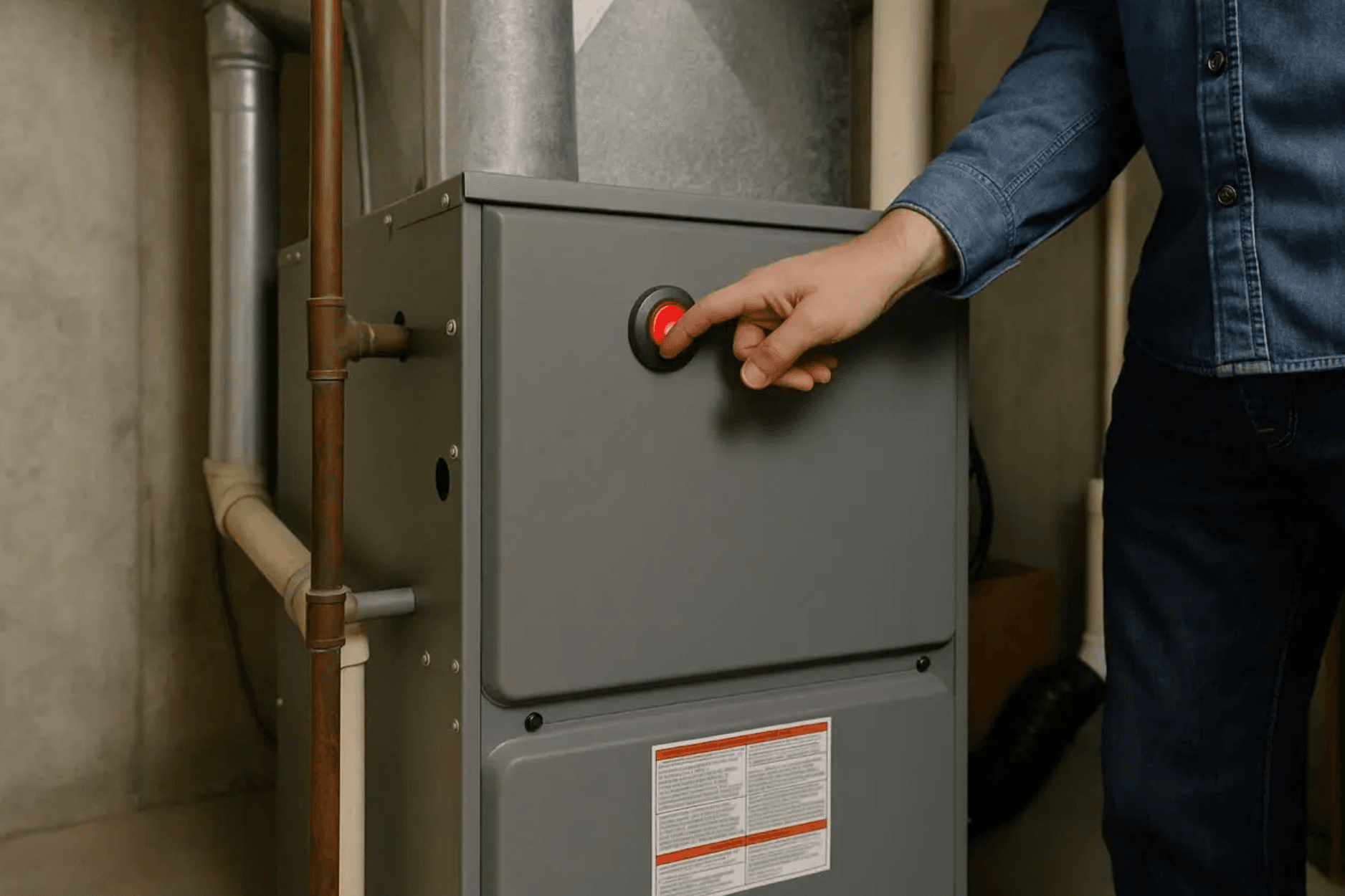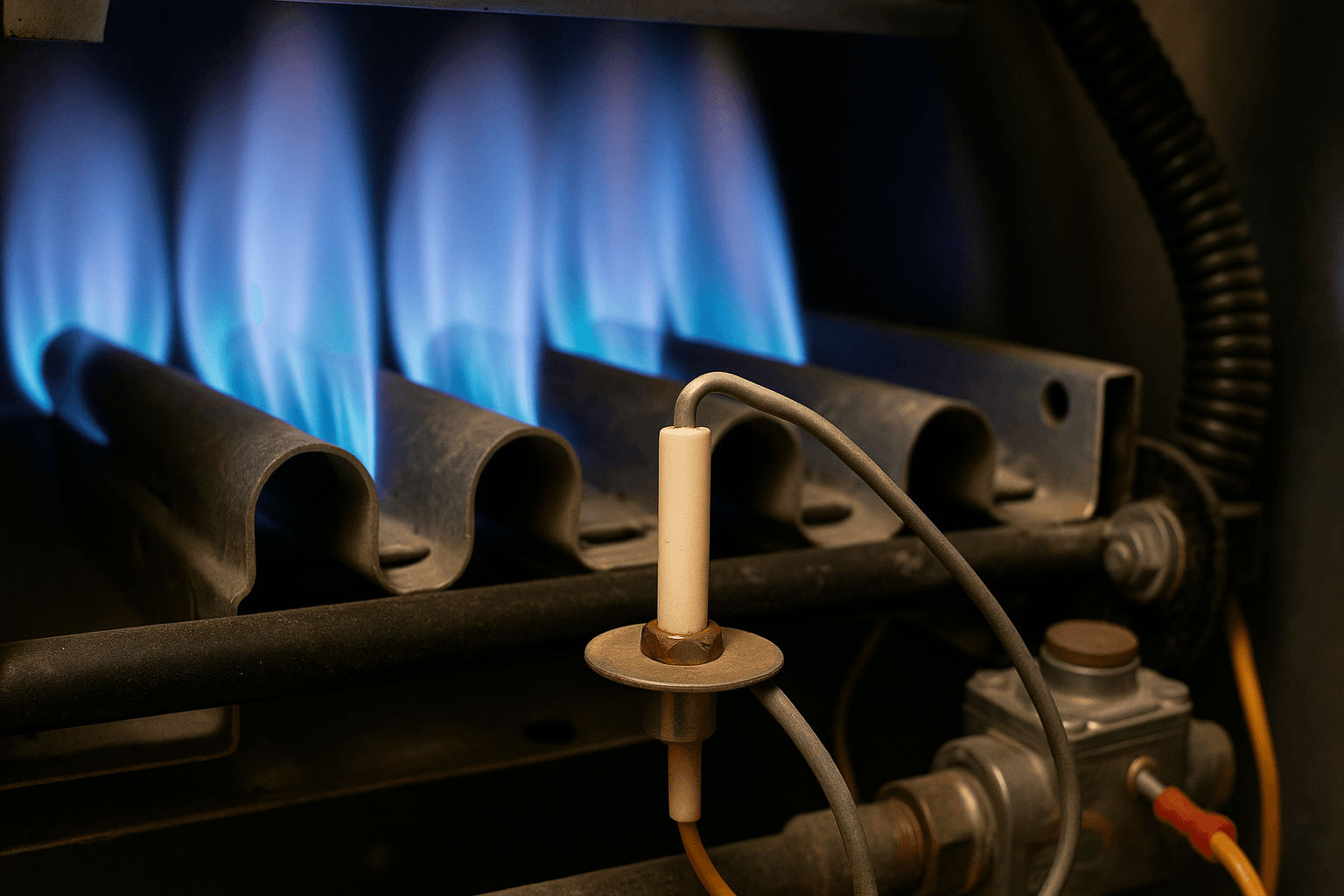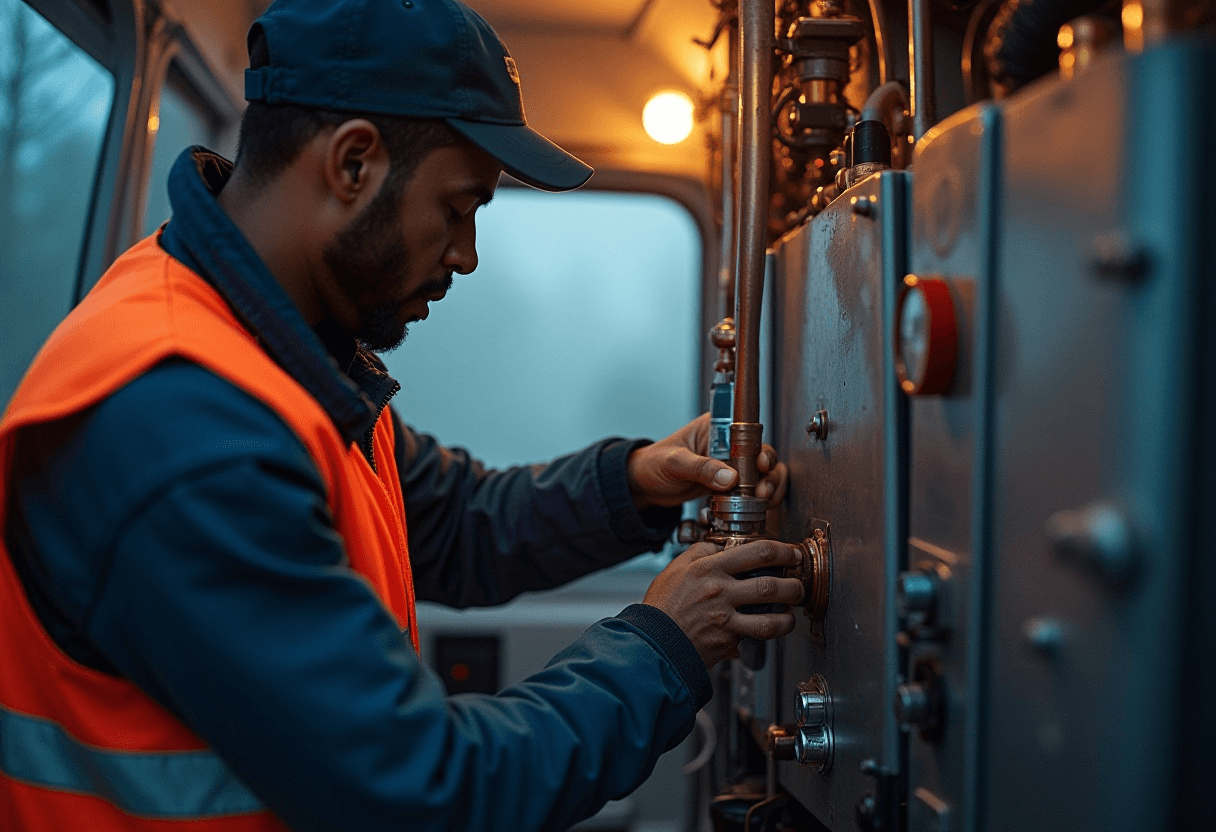How-To Guides
How to Clean a Furnace Flame Sensor in 5 Steps
AZparts Team
Updated on November 17, 2025
7 min read
The flame sensor is a crucial component in a furnace, responsible for detecting the flame and ensuring the system operates safely. However, over time, it can become dirty due to soot or dust buildup, causing the furnace to have trouble starting or to shut off unexpectedly. In this article, AZParts will guide you through how to properly clean the flame sensor in just 5 simple and easy-to-follow steps.
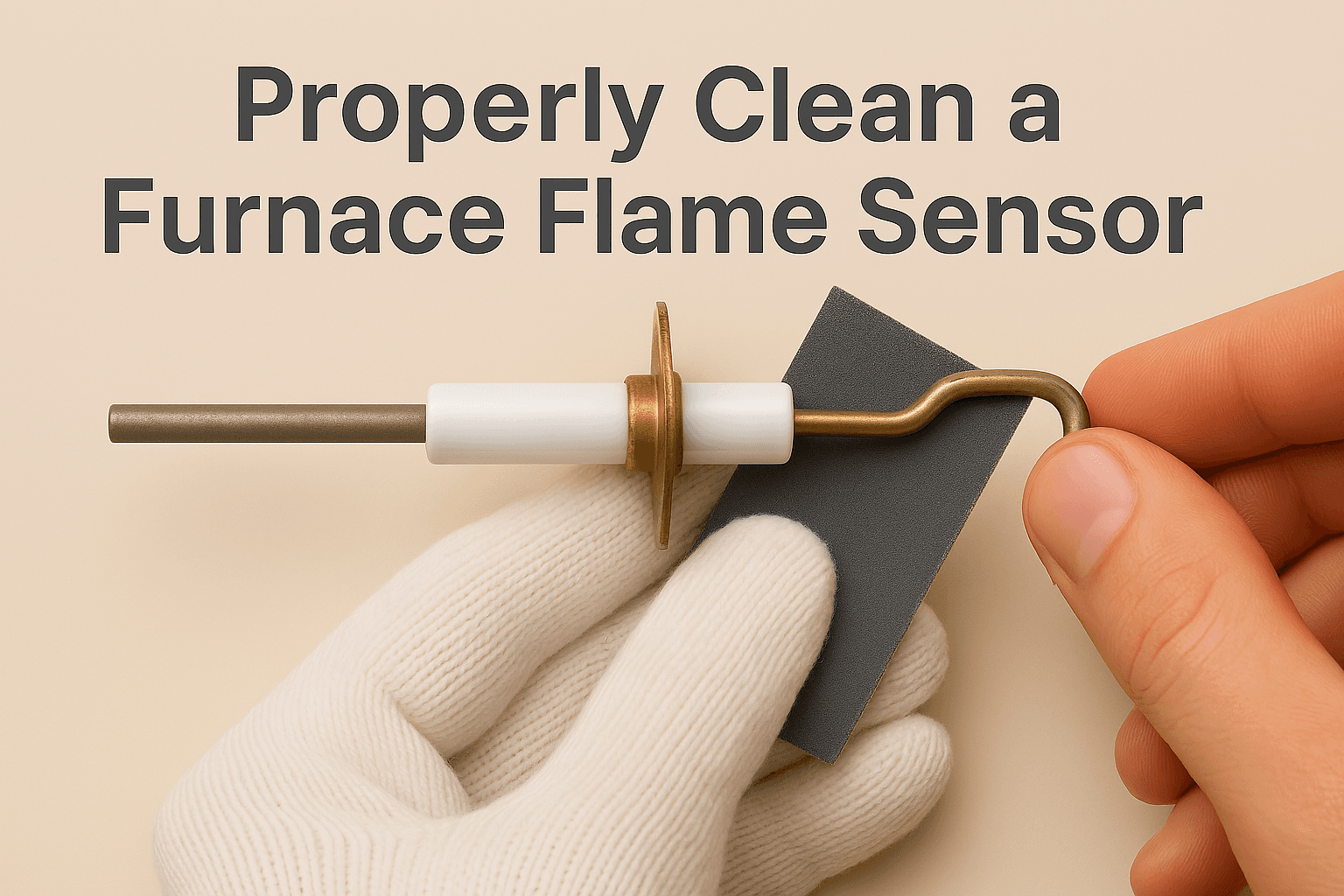
1. What is a Furnace Flame Sensor?
The flame sensor plays a critical safety role in gas-powered systems such as furnaces by detecting the presence of a flame in the burner. If no flame is detected, the sensor sends a signal to the control board to shut off the gas supply, helping prevent gas leaks or potential fire hazards. Over time, the sensor can accumulate soot or dirt, which may reduce its sensitivity and negatively impact the overall heating performance.
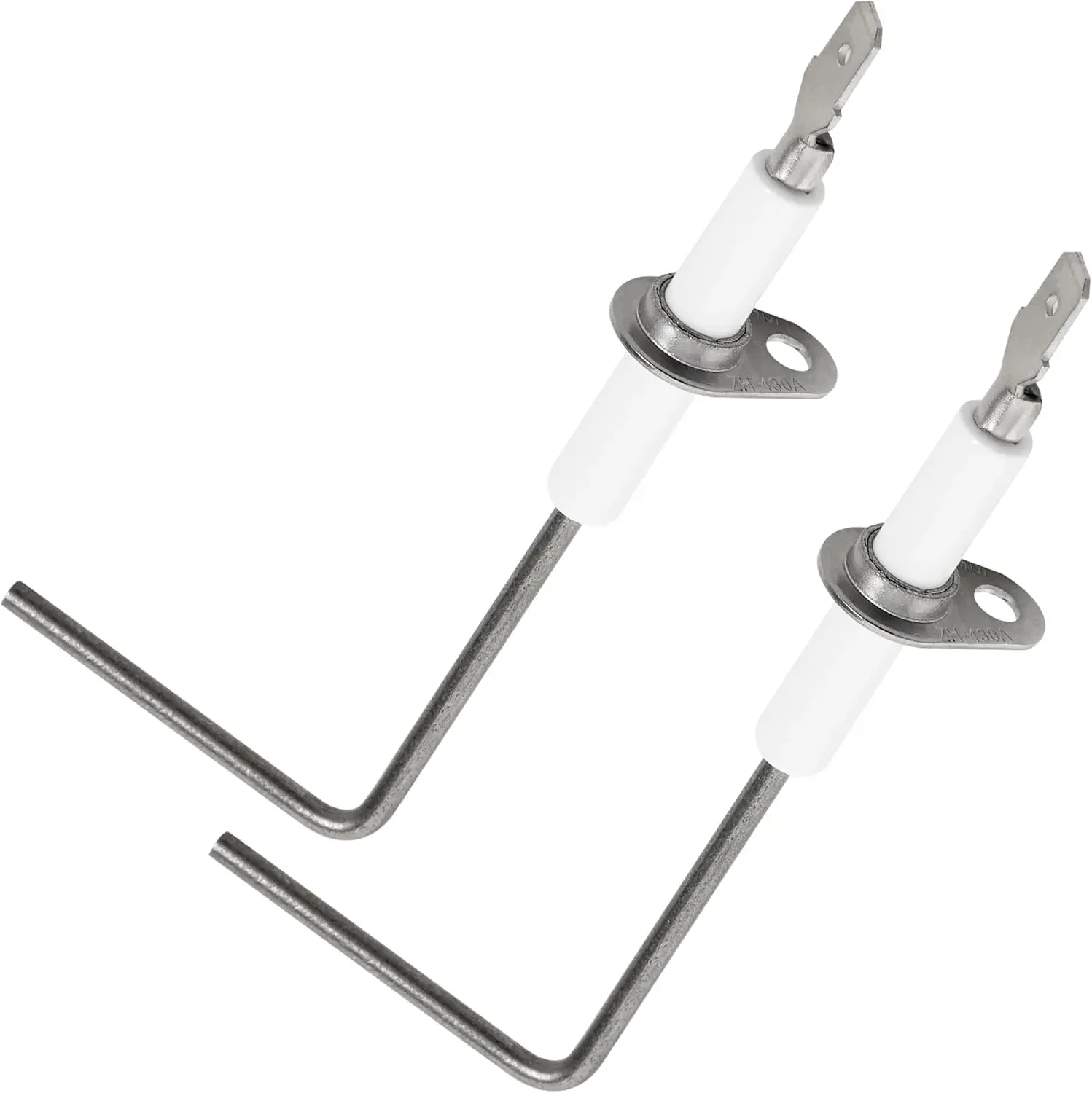
The flame sensor is an essential safety component in gas-powered systems like furnaces (Source: AZParts)
At AZParts, we provide a full selection of high-quality flame sensors replacement parts compatible with a wide range of furnaces and gas-burning appliances. Our products make it easier for customers to perform repairs and keep their systems running efficiently.
Flame sensors typically work using ionization or light detection technology (UV or IR) to confirm the presence of a flame. As a vital part of furnace (specially part of modern gas-burning systems), the flame sensor not only ensures safe operation but also contributes to better fuel efficiency and system reliability.
2. Signs Your Furnace Flame Sensor Needs Cleaning
When your gas furnace or appliance starts acting up, it might be time to check the flame sensor. A dirty or faulty sensor can cause inconsistent performance and even safety issues. Recognizing the signs early helps you know when furnace flame sensor cleaning is needed.
Here are some common warning signs that indicate it’s time for cleaning the flame sensor furnace:
- The furnace or gas stove shuts off unexpectedly, even though fuel and ignition are working correctly.
- The appliance ignites but fails to keep the flame lit — the flame may stay on only a few seconds before shutting down.
- The control panel or thermostat displays error codes related to flame detection or flame failure.
- The flame color changes — instead of a steady blue flame, you notice red, orange, or yellow tones, which often mean soot buildup on the flame sensor is disrupting the signal.
- The furnace runs inconsistently, cycles too often, or consumes more fuel than usual.
If you notice any of these issues, it’s likely time to learn how to clean a flame sensor on a furnace. Regular furnace flame sensor cleaning not only restores efficient performance but also helps prevent safety hazards. Remember to turn off the gas and electricity before performing any maintenance to stay safe during the process.
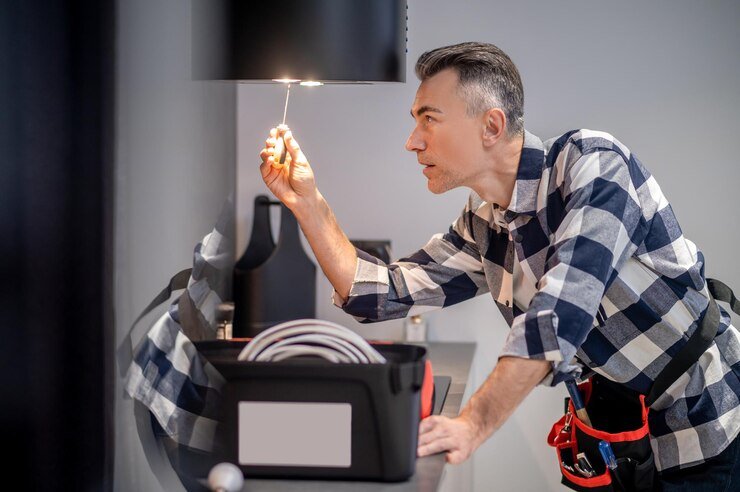
Signs your flame sensor needs cleaning include erratic appliance performance or safety issues (Source: AZParts)
3. How to Clean a Flame Sensor on Furnace
3.1 Step 1: Prepared Tools and Materials
To safely and effectively perform furnace flame sensor cleaning, you’ll need to prepare a few basic tools. Knowing what to use to clean a flame sensor is just as important as understanding how to clean a flame sensor on a furnace.
- A screwdriver to remove the sensor
- Fine-grit sandpaper or a specialized abrasive pad to clean the sensor surface
- A clean, dry cloth to wipe the sensor after cleaning
Additionally, it’s recommended to wear insulated gloves to ensure safety while handling electrical or metal components during the process.
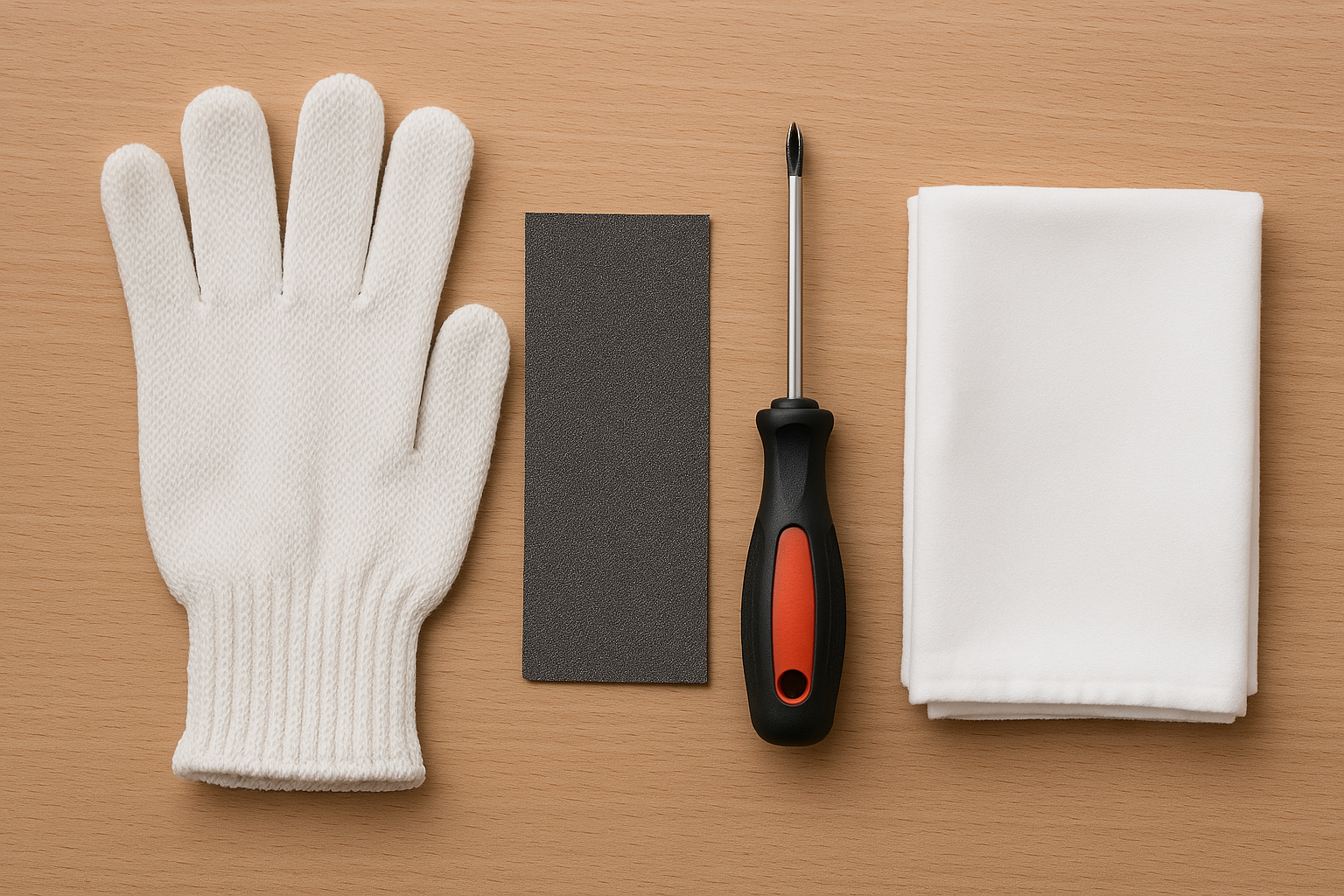
To safely and effectively clean a flame sensor, you’ll need to prepare a few basic tools (Source: AZParts)
3.2 Step 2: Remove the Flame Sensor
Before removing the flame sensor, make sure the furnace is completely turned off. Disconnect the power supply and shut off the gas valve to ensure safety. Then, open the furnace’s access panel. The flame sensor location is usually near the burner area where the flame is generated. Use a screwdriver to loosen the mounting screws and gently remove the sensor from its position. Be careful not to pull too hard, as this could damage the wires or surrounding components.
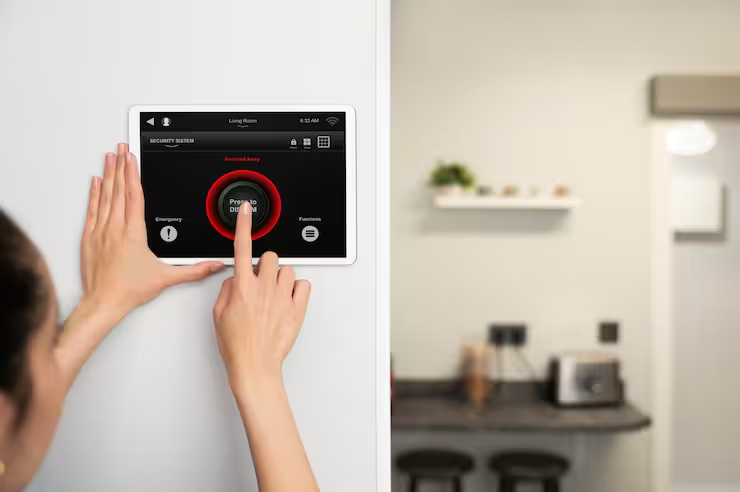
Before removing the flame sensor, make sure the furnace is completely turned off (Source: Freepik)
3.3 Step 3: Cleaning the Flame Sensor Furnace
Once the sensor is removed, carefully inspect the metal tip of the sensor, as this is where soot, dirt, or oxidation often accumulate due to prolonged exposure to the flame. Use fine-grit sandpaper or a gentle abrasive pad to lightly scrub the sensor's surface to remove any buildup. Avoid scrubbing too hard, as this could scratch or wear down the metal surface. After cleaning, use a clean, dry cloth to wipe the sensor thoroughly, ensuring all dust and debris are removed. Do not use water, cleaning chemicals, or solvents, as they may damage the sensor.
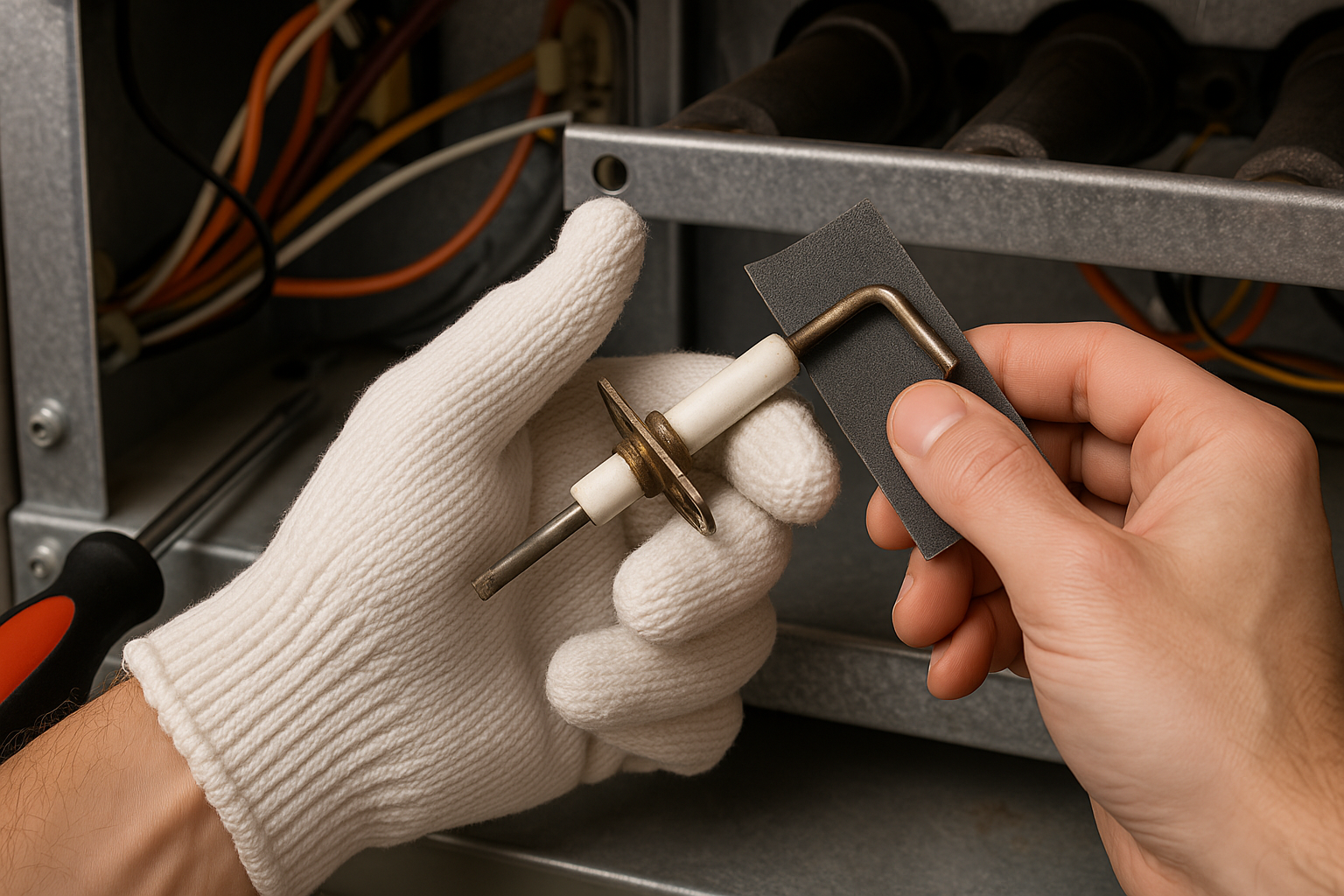
Clean the Flame Sensor (Source: AZParts)
3.4 Step 4: Reinstall the Flame Sensor on Furnace
Once the sensor is completely clean, carefully reinstall it back into its original position in the furnace. Make sure the sensor's tip is correctly positioned towards the flame so it can accurately detect the fire when the furnace operates. Use a screwdriver to tighten the screws securely, ensuring the sensor is not loose or misaligned. Afterward, close the furnace’s protective panel as it was before.
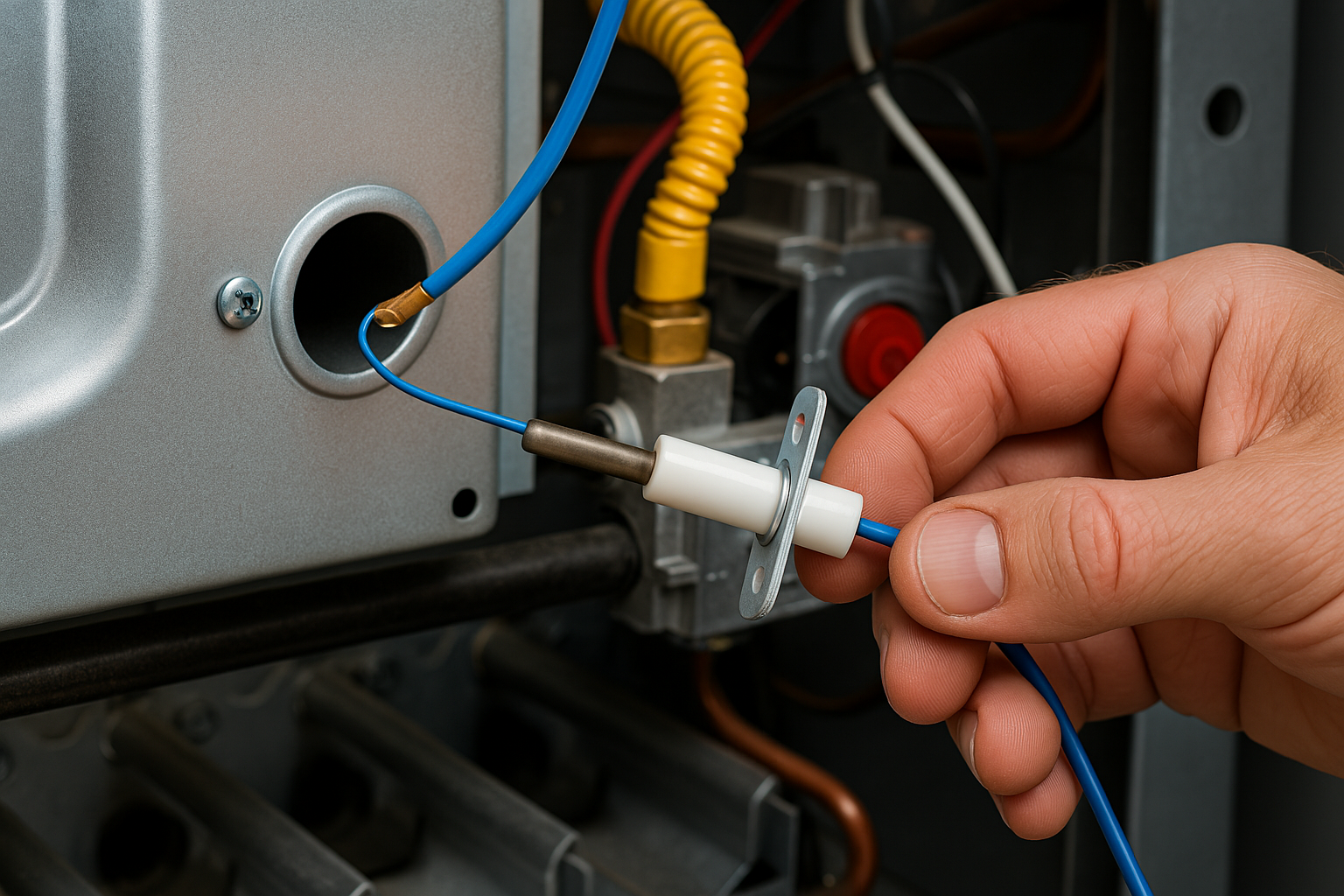
Carefully reinstall it back into its original position in the furnace (Source: AZParts)
3.5 Step 5: Test the Furnace
Finally, turn the power back on and open the gas valve to start the furnace. Observe the furnace's operation: if the sensor is clean and functioning properly, the furnace will ignite, maintain a stable flame, and not shut off suddenly. If the furnace still doesn't operate or shows an error, the sensor may be damaged and need to be replaced. This check ensures that the heating system is safe and effective after maintenance.
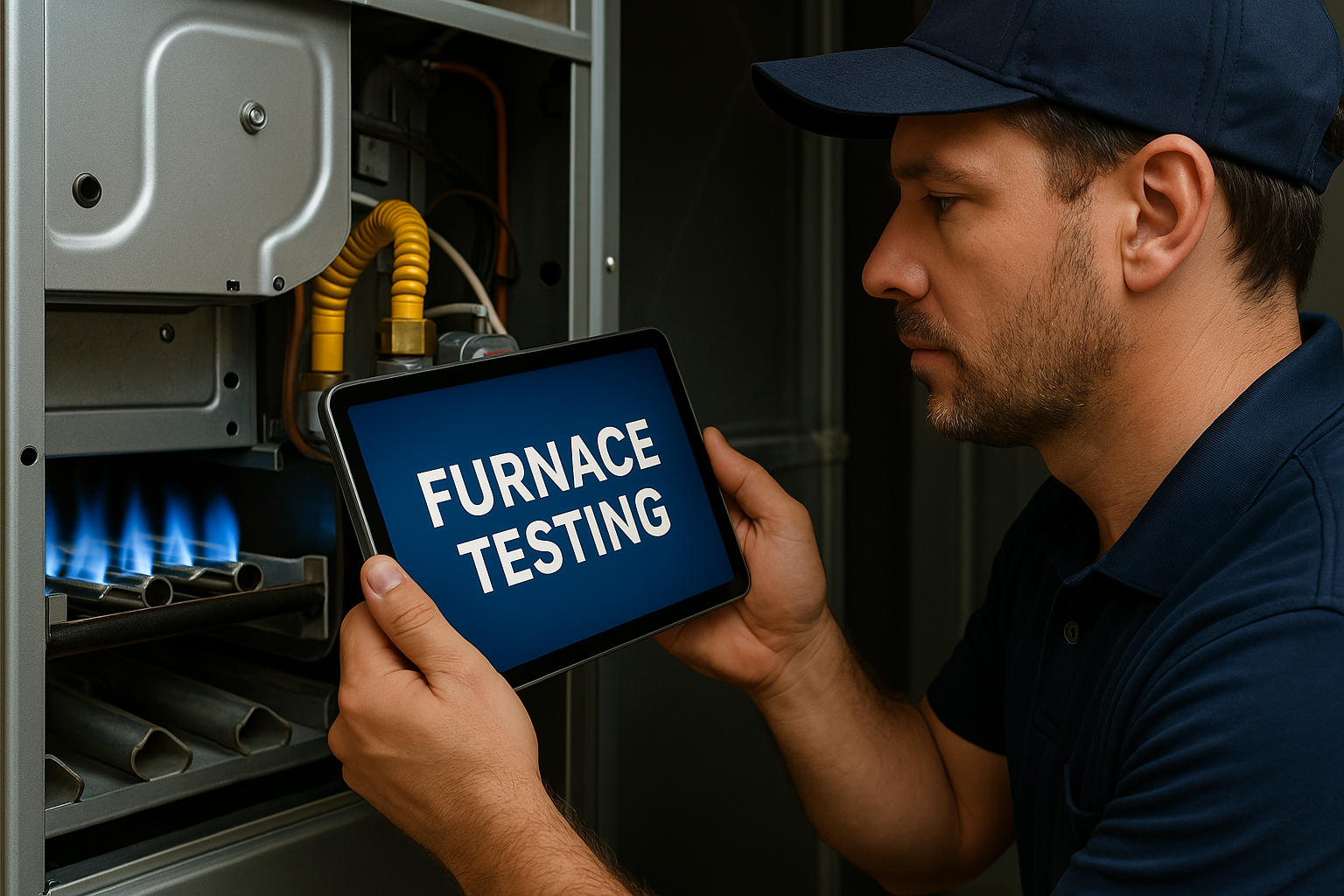
Turn the power back on and open the gas valve to start the furnace (Source: AZParts)
4. How Often Should You Clean A Flame Sensor?
The flame sensor should be cleaned regularly, ideally once a year, before the winter season when the furnace is used most frequently. However, if you notice that the furnace has trouble starting, frequently shuts off, or displays error codes, it may indicate that the sensor is dirty and needs to be cleaned sooner. Cleaning the sensor at the right time helps ensure stable furnace operation, energy efficiency, and safety for your home.
5. Tips to Keep Flame Sensors Clean Longer
To ensure that your furnace operates efficiently and safely, keeping the flame sensor clean is essential. A dirty flame sensor can cause the furnace to malfunction, leading to flame shutdowns or other issues. Here are some tips to help you maintain a cleaner flame sensor and keep your furnace running smoothly:
- Ensure Proper Ventilation System Functioning
A blocked or inefficient ventilation system can lead to uneven flame burning, generating soot and exhaust gases that quickly dirty the flame sensor. To avoid this, check and clean the exhaust fan, ducts, and vents to ensure that your furnace operates at its best.
- Use Clean and Standardized Fuel
If your furnace uses gas, ensure the fuel quality is high and free from impurities. Dirty or substandard fuel generates excess combustion residue, which affects the flame sensor and furnace performance.
- Avoid Dust and Foreign Objects Near the Furnace
Limit exposure to dust, hair, paper, or any flammable materials near the burner area. When burned, these items can create soot, which can accumulate on the flame sensor and reduce its accuracy in detecting the flame.
- Annual Professional Maintenance
While you can clean the flame sensor yourself, it's recommended to have a professional technician perform a comprehensive furnace inspection at least once a year. They will check critical components, ensuring the flame sensor works properly and safely while addressing potential issues early on.
Properly cleaning your furnace’s flame sensor not only helps the system run smoothly but also extends its lifespan and keeps your home safe. With just five simple steps, you can handle the cleaning yourself quickly and easily. However, if issues persist after cleaning or the sensor is damaged, it's best to replace it with reliable furnace parts. Explore high-quality replacement parts at AZParts to ensure proper fit and performance.
Contact information:
8 The Green, Ste A, Dover, Delaware 19901-3618, United States
Read more:
Furnace
Further Reading
Further Reading

